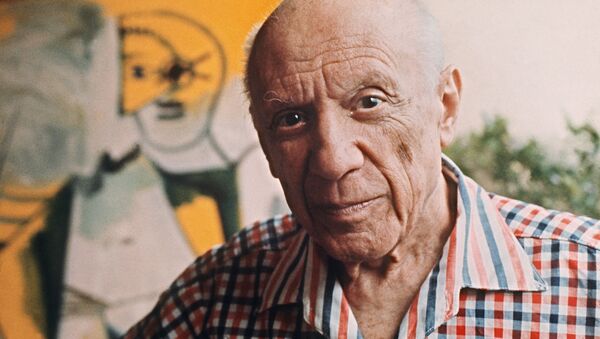Sputnik: What is it about Picasso that makes his art so valuable and why are people so curious about his life?
Lynda Morris: I've been very interested in Picasso’s politics in the post-war period, because he stayed in Paris during the Occupation. I think that he was horrified by what had happened, some close friends of his died in the concentration camps.
But he was also horrified by stories of what the American's got up to when they came into Europe. I know my own Father felt very strongly about that as well. He'd seen stuff in Antwerp and the North of Germany right at the end of the Second World War.
So Picasso had started to get a bit involved. He felt that the people who were of the resistance in France had been amazing, and they were some close friends of his. His art-dealer was Jewish, and had just about managed to survive in the countryside in Northern France. So Picasso was surrounded by it all. He gradually moved towards the communist party in France, there was also the Spanish Civil War hanging in the background and all the horrors of that.
He vowed never to go back to Spain the whole of his life. The period I've been concentrating on is 1944, the liberation of Paris, through to his death in 1973. It's an extraordinary story, and it's so hidden.
They've started selling the late paintings, because a lot of them had been considered too political to be sold, but the machinations of the Larry Gargosian, a big art-dealer has really moved into Picasso big time. About 5-6 years ago, he started to employ John Richardson, Picasso's biographer. I have an extraordinary set of photographs of Richardson and his partner.
These two had brought the owner of the Hirshhorn museum, Joseph Hirshhorn, to visit Picasso in 1961. Adrian Otero, the Argentine photographer had taken a lot of photographs, (which we never get to see for some reason). I found them in an old Spanish book.
In the photos, we can see that Joseph Hirshhorn gets his wallet and checkbook out, and asks Picasso to name his price. Picasso is waving the whole time saying 'nothing is for sale, you can't have anything.' The final photograph shows how Hirshhorn gave his jacket to Picasso, who had been admiring it. He also gives Picasso his wallet and cheque book, again saying: 'Name your price'. The final photograph depicts Hirshhorn, all smiles at having his photograph taken with Picasso, but Picasso is looking very stern. When they've all gone, he kind of breathes a sigh of relief, and he tells the photographer that Joseph Hirshhorn is ‘Mr. Uranium’, and that is why he wouldn't sell him anything.
He owned the Uranium mines in Katanga, and that was where the uranium came from for the bombs on Hiroshima and Nagasaki.
Picasso was involved in correspondence with people in Japan, horrified by what had happened, but they were in Patanga, the big Uranium mines, which is the breakaway province from the Belgian Congo, and that is where Patrice Lumumba was first elected president. Within a month or two, they were found dead in the forest, because he wanted to divide the Uranium equally between the USSR and the USA.
It was a means of stabilizing the post-war world. The secretary general of the UN, Dag Hammarskjöld came all the way from Sweden to find out what had really happened to Patrice Lumumba and his plane with everyone on it. It had crashed six miles from the border with Katanga. So it's a very nasty story, and you can understand why Picasso was behaving like he did.
He really did have this idea of pacifism, he felt that the only way to get to pacifism was to unpick all of this, and get the truth out. Of course, whenever he tried first of all to be one of the Partisans of Peace, to take a petition to Washington, they refused him a visa.
Then in 1956, the Museum of Modern Art in New York did a big exhibition, and Alfred Barr tried to get entry for Picasso, and again it was refused. There was another big show in 1961, and again they did not allow him in.
The views and opinions expressed by Lynda Morris are those of the analyst and do not necessarily reflect those of Sputnik.

